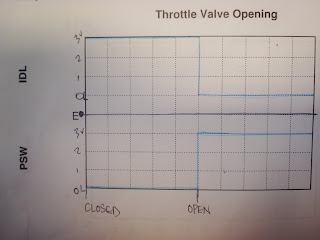Explain its internal operation and why your voltage changes
A Throttle Position Sensor on a motorvehicle is usually found along the air intake system. It is usually mounted directly onto the spindle, and monitors the position of the throttle butterfly.
This variable type throttle position sensor has a variable resistor. It has a 5v supply that is used by the ECU to determine the throttle position via signal output.
The voltage will vary according to the butterfly position.
If it is in wide open throttle (w.o.t) the voltage will be approximately 5v.

When it is in idle, it would be closer to 0v.
Now connect a Power Supply to your sensor and test the voltage ouput at different throttle angles.


From the above graphs you can see just how the voltage increases when the throttle is opened.


Testing the TPS.
Results of the TPS test:

The resistance across the TPS increases as the throttle opens, this is because the voltage increases also.
The TPS has a carbon strip and stylus. When the throttle opens, the stylus (which is connected directly to the throttle butterfly spindle) moves up the carbon strip. When it is at W.O.T, the voltage will be approximately 5v, and the resistance will be approximately 3 ohms.
When the throttle butterfly is shut, the stylus will move back down to the bottom, and have about 0v, and O.L resistance.

